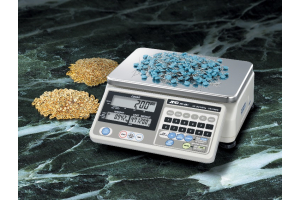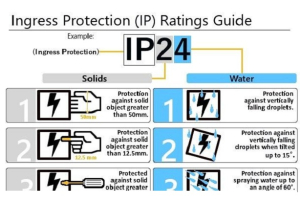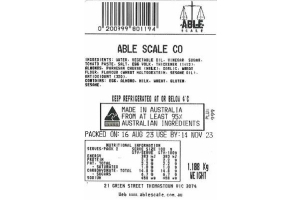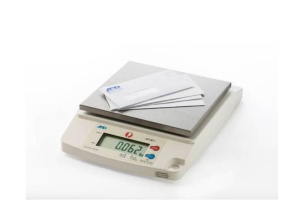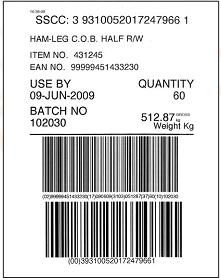
The Complexities of Exporting Meat & Meat Products
The Able Scalemate Touch Screen Carton Labeller is a premium carton labelling device that’s ideal for meat and meat-based products. In the meat exportation trade, labellers are instrumental in conveying vital information, and the quality of the carton labeller can make or break your business.
The meat trade’s quality control is complex, but it is nonetheless an indispensable necessity of the business. In Australia, the Export Meat Program oversees the inspection, verification, and certification of the export meat industry, ensuring compliance with a broad array of legislation related to the marking, labelling, and packaging of meat products. This program offers a scientifically-based inspection system that not only facilitates the production of wholesome meat and meat products but also undergoes continuous scientific review. It provides export certifications recognized by Australia's trading partners, along with necessary inspection services and oversight to all registered export establishments. The program conducts audits to verify industry adherence to the Export Control Act 2020 and its subordinate rules, including overseas market access requirements and establishments' Approved Arrangements.
The Challenges of Meat Export Compliance
Australian meat exports make up about 46% of the country's total meat production and account for 19% of the world's total meat exports. Of these exports, approximately 52% are sold to Asian markets and 33% to the American markets. However, Australia faces significant restrictions accessing global meat markets due to export subsidies and other trade barriers. Some of the chief obstacles include:
- Economic and political challenges, including strict import controls, that act as barriers to sustaining export sales in some of Australia's traditional Asian markets. Nonetheless, improvements in tariff barriers across Asia, America, and various other emerging markets are expected to enhance access and create better opportunities for Australian meat.
- Elevated processing and transportation costs beyond the farm gate that diminish Australia's competitiveness in global export markets.
- Regulatory complexity and compliance issues that pose additional challenges, as meat products must meet international health and safety standards that are both strict and diverse in order to be accepted into foreign markets.
To address these issues, it’s advised Australia should implement strategic measures to boost productivity and enhance cost efficiency. Conducting market research and promoting meat products are also recommended steps in enhancing Australia’s long-term competitiveness and increasing its market share against key global competitors. As such, the role of official marks remains critical as they assure trading partners that Australian meat products meet international standards, facilitating smoother market access and fostering trust in the quality and safety of quality Australian meat.
The Role of Carton Labelling in Export Compliance Australia
Carton labellers are specially designed to generate labels for cartons, streamlining the packaging process in industries such as food manufacturing. These devices are particularly useful in the meat processing sector, where they simplify the labelling process by ensuring that all products are consistently and accurately marked with essential information, including expiration dates, ingredients, and barcodes.
Additionally, for meat exports, the use of carton labellers can facilitate compliance with international trade regulations by accurately applying official marks. These marks are crucial as they certify the meat's origin, quality, and adherence to safety standards, thus increasing consumer trust and facilitating smoother entry into foreign markets. Certain products must carry an accurate trade description to be eligible for import into Australia, though not all imports are subject to this requirement. The Australian Border Force has the authority to seize items that lack proper labelling, especially if they carry false or misleading trade descriptions.
The regulation is in line with the Australian Government's broader initiative on country of origin labelling for food and references the Country of Origin Labelling Information Standard 2016. The labelling rules outlined by the Information Standard differ based on several factors:
- Whether the food is classified as priority or non-priority
- Whether the food was grown, produced, made, or packed in Australia
- Whether the food is sold loose or packaged
The integration of carton labellers in the meat export process not only optimises operational throughput but also supports adherence to regulatory requirements, ultimately benefiting producers with improved market access and consumer confidence.
Carton Labelling
Under the National Trade Measurement Regulations, any pre-packaged product that is packed or sold must have its packaging clearly labelled with the name and address of the packer or the entity on whose behalf the packing was done. The carton must also specify the total volume of the contents within or list the number of inner packages and the volume of each one (for example, 12 x 750 mL). When products are sold directly to consumers in cartons, ie. a three-bottle presentation pack for wine, the Food Standards Code mandates that all essential information required on a wine label must either be replicated on the outer carton or be visible through it on the inner packages.

Specific Official Mark Types for Meat & Meat Products
The Export Control (Meat and Meat Products) Rules 2021 introduces specific amendments concerning the official marks used to certify meat and meat products for export. These amendments include detailed specifications for the dimensions of these marks, depending on their intended use and the method of their creation.
Specifically, the rules stipulate three types of marks: a normal size mark, a small size mark, and a computer-generated mark.
- For a normal size mark, the width is defined as 65 mm and the height as 45 mm, with the height of the letters at 8 mm and the establishment registration number at 10 mm.
- The small size mark reduces these dimensions to a width of 32 mm, a height of 22 mm, letter height at 3 mm, and registration number height at 3 mm.
- For computer-generated marks, which are likely used for more automated and precise labelling processes, the dimensions are set at a width of 24 mm, height of 17 mm, letter height of 2 mm, and establishment registration number height of 5 mm.
These specifications ensure uniformity and recognition in international markets, adhering to stringent export standards. This table shows where specific Official Mark types for meat and meat products are referenced in each of the Export Control Rules 2021:
| Official Mark Type | Meat Rules | Wild Game Rules | Poultry Rules | Rabbit & Ratite Rules |
| Australia Inspected | 8-10 | n/a | 8-10 | 8-10 |
| Australia Inspected (lamb) |
8-11 | n/a | n/a | n/a |
| Halal Meat | 8-12 | n/a | n/a | n/a |
| Foreign Country Identification |
8-13 | 8-11 | 8-11 | 8-11 |
| Australia Approved | 8-16 | 8-10 | 8-14 | n/a |
| Australia Approved (lamb) |
8-17 | n/a | n/a | n/a |
| European Union | 8-18 | 8-15 | n/a | 8-14 |
| Carton Seal | 8-19 | 8-16 | 8-15 | 8-15 |
| Carton Reseal | 8-20 | 8-17 | 8-16 | 8-16 |
| Australian Government |
8-21 | 8-18 | 8-17 | 8-17 |
| Approved for Export | n/a | 8-14 | n/a | n/a |
What You Need To Know About Meat Packaging Labelling
In order to meet both regulatory and customer requirements, meat packaging labels must contain important information that clarifies crucial details such as the product's origin, handling, and quality. These informative markings include:
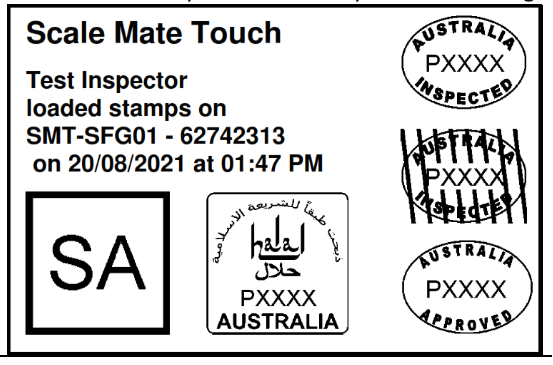
Generic Information: Labels must specify if the meat is bone-in or boneless and identify the species of the meat.
Country of Origin: Mandatory for exports, indicating the meat's originating country.
Carcase Identification: Includes a cipher denoting the carcase's age and sex, such as YG for young beef.
Product Identification: Describes the primal cut (e.g., STRIPLOIN) according to the Handbook of Australian Meat and includes a common code cipher for specific customer country requirements.
Primal Weight Range: Shows the minimum and maximum weight range for each primal cut within the carton.
Packaging Type: Indicates if the product is Individually Wrapped and Vacuum Packed (IW/VAC).
Bar Code: A GS1 - EAN•UCC 128 code compliant with international meat industry standards.
Packed On Date: The exact day, month, year, and time the product was packaged.
Best Before Date: Suggests when the meat is best consumed by, although it can still be sold beyond this date if it remains in good condition. Meat with a "use by" date cannot be sold after this date.
Net Weight: Displays the weight of the meat excluding packing materials, often shown to two decimal places in kilograms, and sometimes in pounds.
Batch Number: An internal identification number for product traceability.
Carton Serial Number: Typically matches the number shown in the barcode.
Halal Approved: Confirms that the meat has been certified by an approved Islamic organisation following ritual slaughter.
Establishment Number: Identifies the registered plant number.
AI Stamp: Indicates inspection by the Australian Federal Government.
Refrigeration Statement: Directs that the product be kept chilled or refrigerated.
Number of Pieces: The count of primal cuts contained within the carton.
Company Code: An internal code used to identify the product.
Company Trading Name: Identifies the packer of the product.
Other Requirements: Includes specifics like MSA (Meat Standards Australia) for beef only, along with EU high-quality beef labelling requirements and other international compliance needs.
What You Need To Know About Export Control Marks
Australian Meat Standards legally dictate the hygienic production and transportation of meat and meat products for human consumption. Export Control Marks are labels applied to products exported from Australia; the Department of Agriculture, Fisheries and Forestry (or DAFF for short) regulates these marks, requiring exporters to have current DAFF/AQIS Export Certification and an approved licence to use a certified mark and export meat products.
Essential information on a DAFF meat export label includes:
- Authorised registration number of the business
- Inspection location (e.g., Australia)
- Product type (e.g., lamb, beef, halal meat)
Each type of meat product label must adhere to specific mark dimensions. If a tamper-proof carton seal is broken or incorrectly applied, the product will be rejected. Carton seals must include:
- A verified business registration number
- A combination of letters and numbers associated with the manufacturer's mark
- A unique alphanumeric code for each mark
If a carton seal is broken during inspection in Australia and the product is still approved for export, a new seal is applied that informs the receiving country of its inspection status. Different countries may require different marking standards.
How Able Scale’s Touch Screen Carton Labeller Can Help Your Business
The Able Scalemate Touch Screen Carton Labeller is ideal for both small and mid-sized food applications. With cutting edge tech that’s designed to integrate with a diverse array of printers and scales, it boasts a robust industrial stainless steel panel PC, equipped with a 12"-15” touch screen display and an IP65-rated panel for dust and water resistance. The fanless design and from an Intel Atom D525 1.8GHz processor ensure efficient operation, complemented by multiple I/O ports for enhanced communication capabilities. The included Scalemate software offers a suite of features such as price computing, both variable and fixed weight pricing, price per kilogram, total price calculation, batch number tracking, barcode generation, store name and date fields, programmable and message text, and a consecutive number field, all designed to streamline operations and enhance usability.
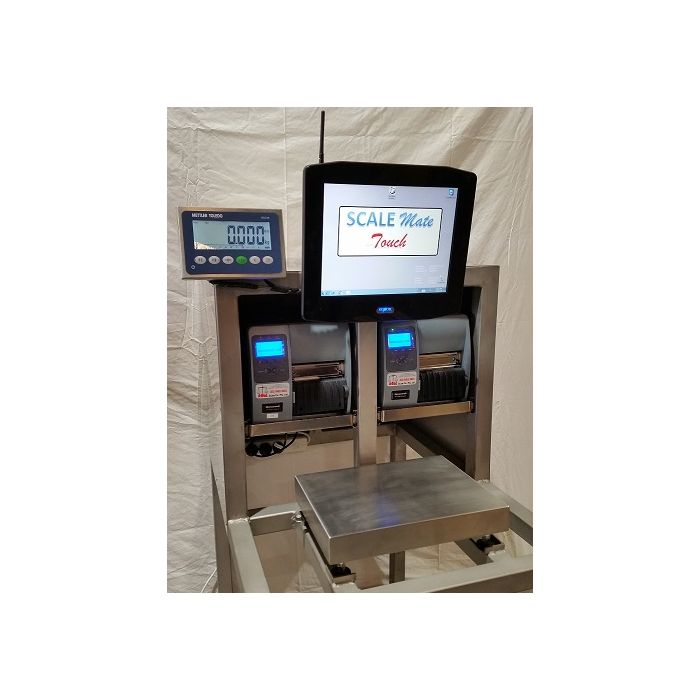
Conclusion
Meat mark regulations may seem complicated, and at times, cumbersome, but they are nonetheless an important safety factor of the meat export trade. You can rest assured knowing that your business is in safe hands with the Able Scalemate Touch Screen Carton Labeller. For any inquiries, you can get it in touch with Able Scale here. You can also browse our vast selection of products over at the Able Scale homepage.
Have questions about our products and services?
We are here to help. Please fill in our online enquiry form below, and we will respond to you within the next business day.



 Call us Today
Call us Today


